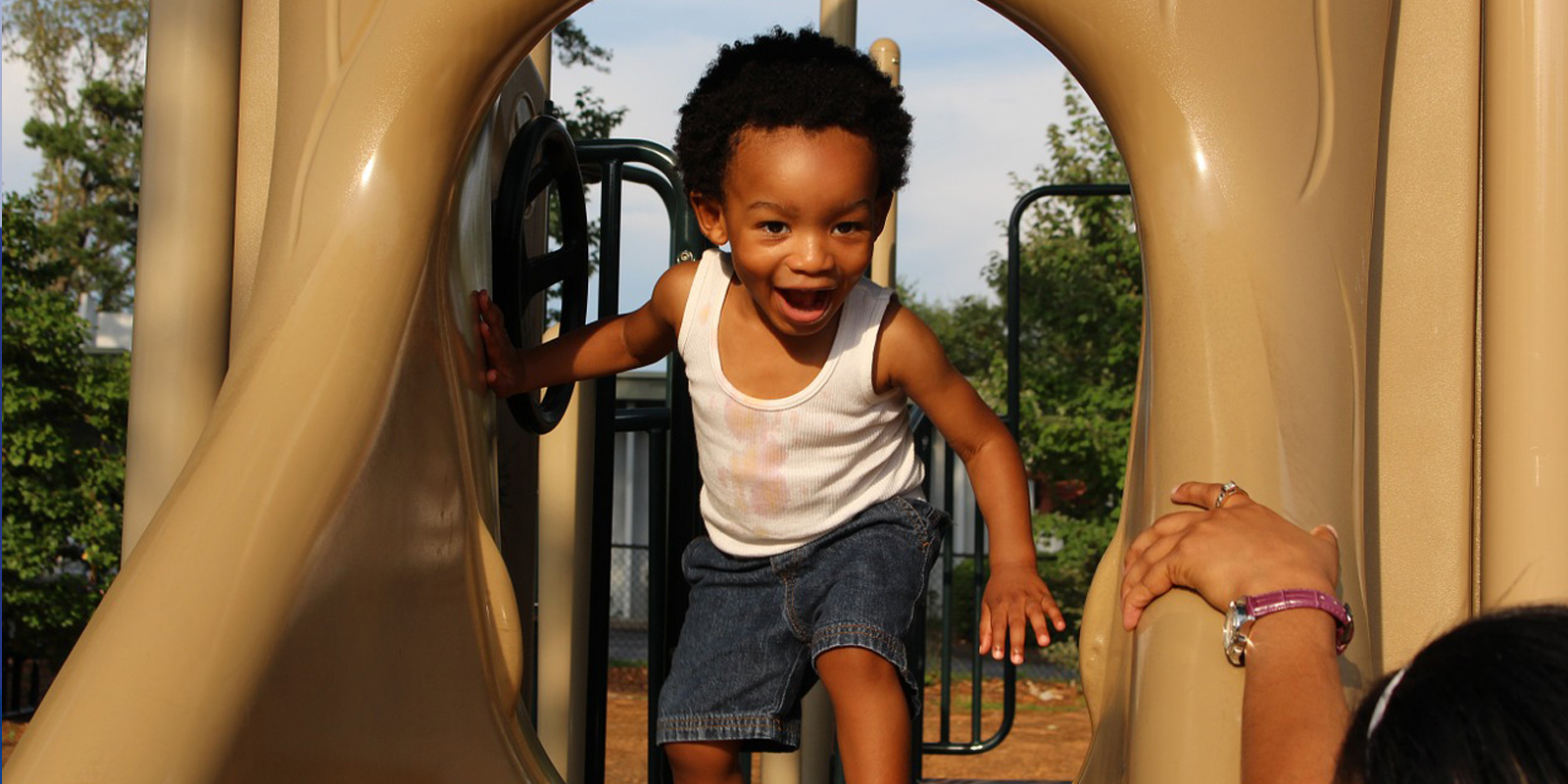Because we can’t take our Early Learning Nation Studio on the road during this time, stay tuned as ELN recaps Top Takeaways from important webinars, town halls and virtual events from the Early Learning field. Read them all and join the conversation! And visit our Early Learning Nation channel on YouTube for interviews with leaders from education, child development, business, politics and more.
On Tuesday, July 21, the Campaign for Grade-Level Reading (CGLR) powered a conversation about leveraging public spaces to advance early learning and literacy. The event was part of their can’t-miss Learning Tuesdays webinar series.
Helen Hadani, dual fellow at the Brookings Institution, shared the larger context for this initiative, and then Dr. Brenna Hassinger-Dass (Assistant Psychology Professor, Pace University, and science advisor for Playful Learning Landscapes) and Jane Park Woo (Director, Too Small to Fail) shared their experiences integrating learning tools and opportunities into public spaces. Below are our top three takeaways from the event.
👉 Read more: Playful Learning Landscapes
1. COVID-19 remains a challenge for learning. Hadani presented evidence that transitions out of school and to virtual learning may widen education inequality.
“There is a widening distribution, with children’s learning with more children left behind and most of those children are likely to be living in poor areas and marginalized communities,” she explained, “Wealthier families are better situated to mitigate COVID effects, since they live in more comfortable homes and have better internet connections and resources to pay for tutors. That’s not the case most of the time for children living in poor areas.”
COVID makes the divide more apparent and adds urgency to the movement to enrich learning opportunities in everyday environments that are accessible to all children and families.
2. Public spaces present learning opportunities. One possible solution is playful learning landscapes. These landscapes provide fun and interactive installations in spaces where families frequent, such as grocery stores, laundromats and public parks.
While there is no silver bullet for education inequity, playful learning landscapes offer a powerful solution with a wide range of benefits.
👉 Read more: Meeting and Teaching Families in Unexpected Places
In western countries, kids spend about 20 percent of their waking time in school and the other 80 percent in their homes and community settings, but a lot of work to improve academic and other outcomes has been focused on school.
In explaining the work behind this initiative, Hassinger-Dass said, “We thought, How can we use everyday places and spaces and transform them into places where we can foster learning and caregiver-child engagement? ”
3. Children and communities benefit from the partnerships and implementation. The playful learning landscapes initiative has developed ways to spur playful learning, physical activity and caregiver-child interaction in everyday places and spaces.
In partnership with communities, the team designs projects that are non-obstructive, attention-catching, intuitive and interactive. The research and implementation of these projects are centered around community members and families and promote their input and involvement at every stage of the process.
“Projects are a collaboration with the community from the very start,” Hassinger-Dass explained.
👉 Read more: How Did Play Become a Four-Letter Word?
Libraries, vacant lots and bus stops are other examples of spaces that have been transformed to promote early learning and interaction. Philadelphia libraries saw an increase in program attendance after a renovation. “The programming didn’t necessarily have to do with play and learn spaces,” Hassinger-Dass clarified.
Urban Thinkscape is another Philadelphia project that yielded positive results. What was once a grassy lot behind a bus stop was transformed into a learning space with various installations, incorporating stories and puzzles, to foster play, literacy and executive function skills.
Too Small to Fail is also focused on meeting families where they are. Describing Too Small to Fail’s Talking is Teaching campaign, Park Woo said, “On average, children from lower-income families hear millions fewer words than their higher-income counterparts.”
These findings reiterate the critical challenge we are facing but also illuminate opportunities we have in the first few years of life to build children’s vocabulary and a strong foundation for learning.
“It’s not just the number of words that children hear, but really it is the quality of the moments that are shared,” she explained. Through partnerships, her team has transformed thousands of spaces to surround families with language, making everyday environments more conducive to learning.
👉 Read more: Goodbye, Chipmunks. Hello, Books.

Mark Swartz
Mark Swartz writes about efforts to improve early care and education as well as developments in the U.S. care economy. He lives in Maryland.



